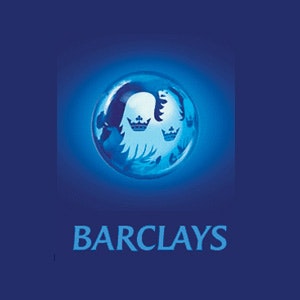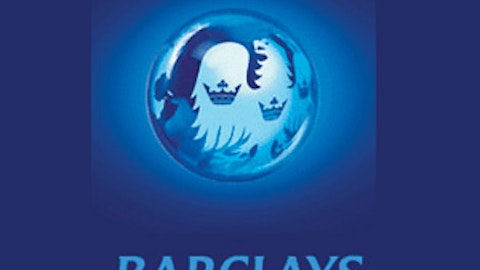
I’m on the h
The PE10 compares the current share price with average earnings per share for the last ten years. This smoothes out any short-term volatility and lets you see whether a company looks cheap compared to its long-term earnings.unt for companies that still look cheap, based on their long-term earnings potential. To help me hunt down these bargains, I’m using a special version of the price to earnings ratio called the PE10, which is one of my favorite tools for value investing.
Today, I’m going to take a look at the PE10 for the U.K.’s third-largest bank, Barclays PLC (ADR) (NYSE:BCS) .
Is Barclays a buy?
Barclays shares have risen by 79% over the last year. Are they now fully priced, or is there still more to come?
Let’s take a look at the bank’s current P/E and its PE10:
| Trailing P/E | PE10 | |
|---|---|---|
| Barclays | 9.8 | 6.9 |
Barclays PLC (ADR) (NYSE:BCS)’s trailing P/E of 9.8 is higher than its PE10 of 6.9, suggesting that the bank could still be a buy, as its long-term average earnings are higher than its current earnings.
Discount to book value
There’s a second reason I believe Barclays PLC (ADR) (NYSE:BCS) may be a strong buy. As I write, Barclays shares are changing hands for around 320 pence. This is 21% below the bank’s net asset value per share of 405 pence, and 7% below its net tangible asset value per share of 344 pence.
Healthy banks normally trade slightly above book value, so these discounts indicate that the market is still pricing a lot of risk into Barclays — risk I believe may be exaggerated.
Return to profits
Barclays PLC (ADR) (NYSE:BCS)’s first-quarter results showed the bank returning to profit, and brokers’ consensus forecasts suggest that full-year earnings could be around 35 pence, placing Barclays on a forward P/E of 9.2.
The firm’s dividend is also expected to rise this year — last year’s payout of 6.5 pence is expected to rise by around 12% to 7.3 pence, providing a forward dividend yield of 2.3%.
Although this remains below the FTSE 100 average of 3%, there is scope for substantial long-term growth. In 2012, Barclays set aside 1.6 billion pounds for PPI compensation payments, and in the first quarter of 2013, the bank incurred 514 million pounds of costs as part of its Transform restructuring program.
These costs reduce the amount of spare cash Barclays can return to shareholders, but this situation won’t last forever. I think Barclays is a buy.
The article This P/E Suggests Barclays Is a Buy originally appeared on Fool.com and is written by Roland Head.
Roland does not own shares in any of the companies mentioned in this article.
Copyright © 1995 – 2013 The Motley Fool, LLC. All rights reserved. The Motley Fool has a disclosure policy.
